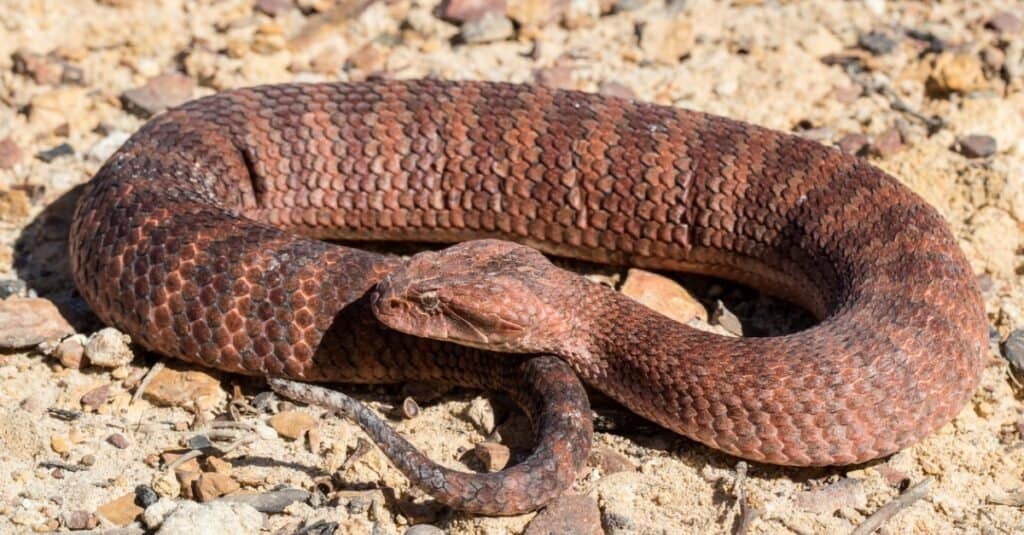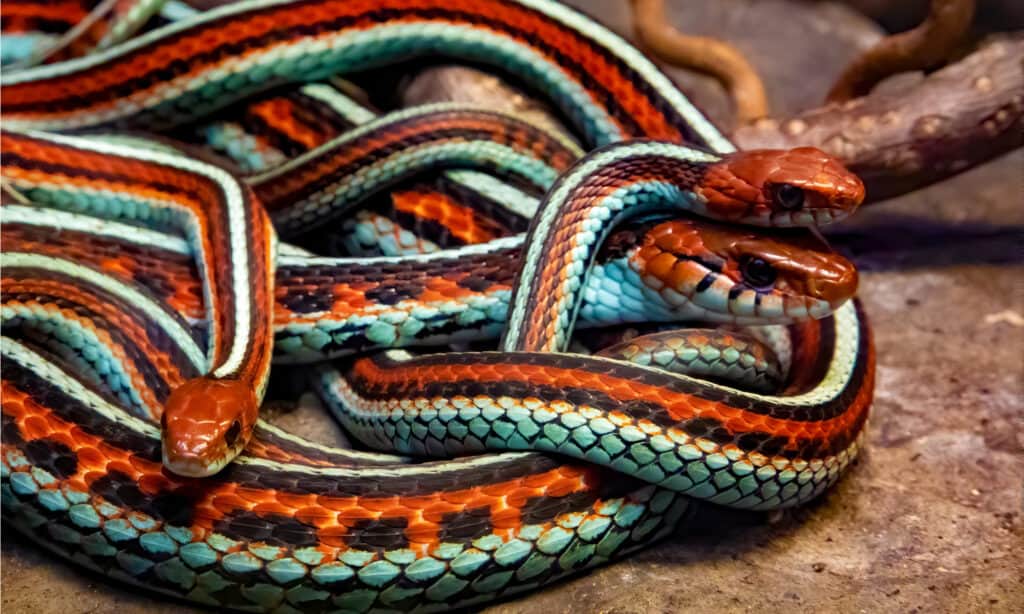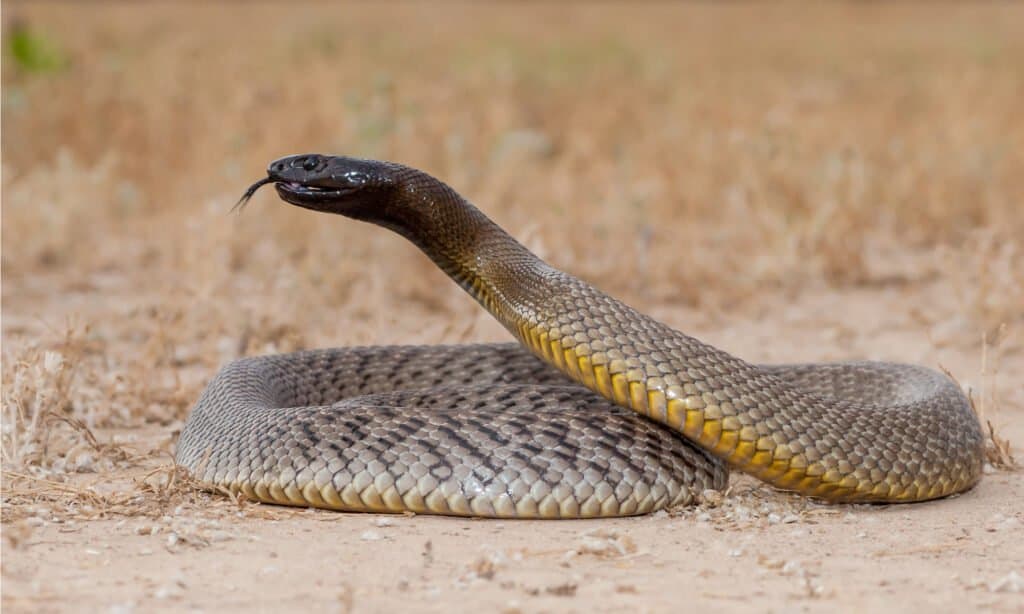Snakes are generally considered to be one of the deadliest animals in the world, and with over 3,400 species of snake, there is a great deal to learn about these creatures. Although we know many exciting things about them already, scientists are still studying these fascinating reptiles. Therefore, we have compiled a list of 10 incredible facts that you must know about snakes. Let’s get started!
1. There are no snakes in New Zealand
Although other areas have a large variety of snakes, none of them live in New Zealand. The entirety of the nation of New Zealand is free of land-dwelling snakes. The reason for this is the complex and ever-changing climatic conditions in the region that make it incredibly difficult for snakes to live there. However, New Zealand does get occasional visits from two water snakes, namely: The yellow-bellied sea snake and the yellow-lipped sea krait. These snakes, however, don’t visit for a lengthy period because the waters in New Zealand are typically too cold for them.
2. Snakes get their heat from external sources
Snakes are ectotherms, which means that they are cold-blooded and do not generate heat internally. They need external sources like the sun to help them heat up and gain the energy to go about their daily functions. When they fail to get this, they find it difficult to carry out tasks like movement or even food digestion. This is why snakes generally seek warm places to live. It is also why late at night, it is not uncommon to find snakes on sidewalks and roads trying to get heat from the asphalt.
3. Snakes can go months without eating
When it comes to food, snakes have far more endurance than humans and other mammals. They do this by reducing their energy consumption and failing to digest stores of protein until much later. Some snakes are so good at conserving energy that they limit their metabolism rate by up to 72%. This means that some snakes can go up to a year without food. This trait boosts the survival chances of snakes in the wild. It also makes them incredibly flexible and deadly predators.
4. Some snakes don’t lay eggs

Death adders do not lay eggs.
©iStock.com/Ken Griffiths
Snakes are reptiles and they are normally expected to lay eggs. However, while a good number of snakes do lay eggs (in fact about 70% of snakes), some do not lay eggs but give birth to babies. Most vipers and water snakes give birth, along with boas, and a few others.
5. Canada is home to the largest gathering of snakes

Over 75,000 snakes come together to mate during springtime in Canada.
©spatuletail/Shutterstock.com
Canada is a real home to many species of snakes with over 25 species of snakes living in the nation. Furthermore, the Narcisse Snake Dens of Manitoba, Canada is the largest gathering of snakes that you will find anywhere in the world. Over 75,000 snakes come together to mate during springtime in these snake dens.
6. Snakes are generally venomous and not poisonous
The chances that you have heard someone say that a snake is poisonous are very high. However, experts have pointed out that the vast majority of dangerous snakes are not poisonous but simply venomous. The difference between these two is that a poisonous animal releases harmful toxins when you eat it, while a venomous one is one that only transfers toxins through a bite or a sting.
Most snakes can be eaten with no deadly consequences, therefore, they are not poisonous. An exception to this is the keelback that stores the poisonous toxins of its prey thereby making it poisonous to eat.
7. The inland taipan is the most venomous snake in the world

The most venomous snake in the world is the inland taipan.
©Ken Griffiths/Shutterstock.com
The inland taipan delivers a nasty cocktail of toxins that is certain to immobilize its victim when it strikes. Some of the toxins that are contained in the venom of this snake include taipoxin, a complex mix of neurotoxins, procoagulants, and mycotoxins. The effects of a strike from the inland taipan include muscle paralysis, breathing problems, muscle damage, and hemorrhage in blood vessels.
The good news is that the chances that you will run into one is low, and it generally has a peaceful temperament. The inland taipan is typically brown colored with a blackhead.
8. Snakes do not have eyelids
Snakes do not have eyelids, which means that they do not have to blink or even close their eyes. Instead of eyelids, a thin clear membrane covers their corneas, called spectacles or brilles and this is what helps to protect their eyes.
9. Snakes have four types of movements
When you imagine a snake moving, chances are that you imagine it slithering through the grass and no other way. However, experts have pointed out that snakes have three other ways by which they move apart from this. The four movement types are:
- Lateral Undulation (Slithering)
- Concertina Locomotion
- Sidewinding
- Rectilinear Locomotion
To fully understand the various ways that snakes move, read this comprehensive piece on how snakes move.
10. Snakes have internal ears
Of course, you have not seen a snake with an external ear but that is no reason to believe that snakes are deaf. They do have an internal bone that functions like an ear through which they can pick up vibrations and sounds. However, they still don’t hear extremely well, so, noise-making may not be the most effective way to scare a snake away.
Additionally, even though their ears may give them information about predators and prey approaching, their tongues are their primary tool for hunting and staying aware of their surroundings. They use it to sense chemical signatures that give them information about prey and predator.
The photo featured at the top of this post is © Andre Coetzer/Shutterstock.com
Discover the "Monster" Snake 5X Bigger than an Anaconda
Every day A-Z Animals sends out some of the most incredible facts in the world from our free newsletter. Want to discover the 10 most beautiful snakes in the world, a "snake island" where you're never more than 3 feet from danger, or a "monster" snake 5X larger than an anaconda? Then sign up right now and you'll start receiving our daily newsletter absolutely free.
Thank you for reading! Have some feedback for us? Contact the AZ Animals editorial team.






